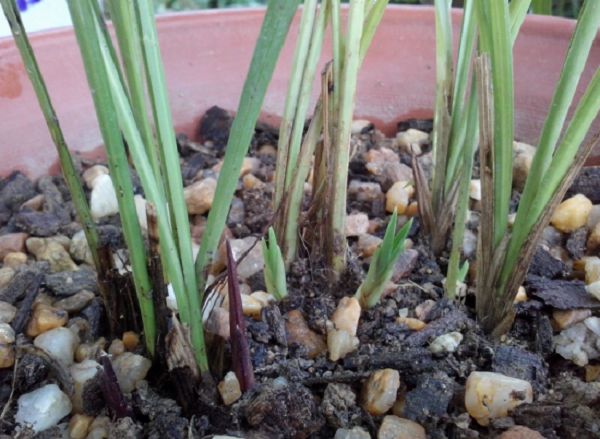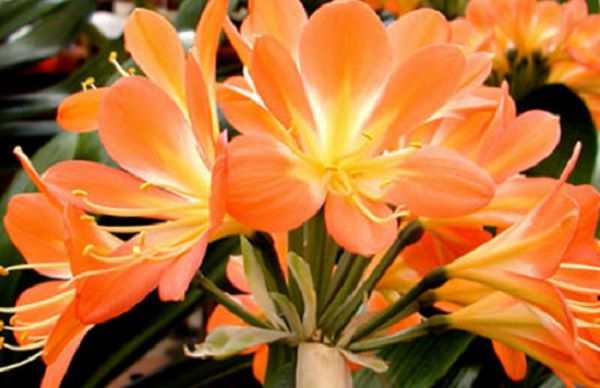This paper discusses the essentials of fertilization in orchids from three aspects.

The three secrets of orchid cultivation, ventilation, watering and fertilization! It is not easy to apply these three secrets flexibly. Especially fertilization, there are a lot of flower friends are not very understanding of fertilization, today we will learn those things orchid fertilization bar.
Orchid fertilization: We should remember that fertility deficiency will not cause fatal damage to the orchid plant, nor will it have too much impact on the growth and development of the orchid plant, but excessive fertilization or improper fertilizer control will cause different degrees of negative effects on the orchid plant, and serious ones can cause death. Simply put, orchid cultivation can be done without fertilization, even if it is to master the program of fertilization. Such as weak seedling element point raise, strong seedling as long as the plant material fertilizer point such as a fragrant soil, humus soil, almost no fertilizer. But the vast majority of orchid novice you tell him not to add some fat to the basin, he is absolutely not give up. Do not put orchid toss death, also will not give up, this is also one of the fun of orchid cultivation. Therefore, it is necessary to study, explore, practice and summarize the fertilization seriously.
1. Types of fertilizer:
1) Organic fertilizer: soybean, peanut, corn, sesame, bean cake, rapeseed cake, sesame residue, rain sausage and other retting fertilizer water, 200 times liquid irrigation, preferably decomposed for more than half a year. This kind of fertilizer water contains potassium and nitrogen, which is suitable for spring application. It can promote cell division of orchid plants. The water quantity management method is proper. The seedling rate is relatively high. This fertilizer has a pungent smell after fermentation and has a large number of harmful bacteria and insects. It should be strictly sterilized and insecticidal. It can be used after half an hour with insecticides such as acetamiprid.
2) Chemical fertilizer: chemical fertilizer works quickly, but the temperament is not as mild as organic fertilizer. Old brands such as Huabao can be used with confidence.
The accurate grasp of fertilization is the understanding of the growth habits of orchid plants, so it is very important to understand the growth habits of orchid plants.
2, according to the growth habits of orchids different growth period fertilizer management:
1) Germination period: 8-18 ℃ in spring is the germination temperature of orchid plant. In this period, the root system of orchid plant recovers, the head of reed awakens, the mother cell begins to be active, after spraying Huabao No.4 fertilizer twice, Garland King facilitates germination when watering, and there is no sign of growth on the surface of orchid plant in this period. Weak seedlings must be allowed to continue to sleep, and then later fertilizer.
2) Growth period: 12-20 ℃ is the normal growth temperature of orchid plant. At this time, the root system of orchid plant begins to stretch. Last autumn bud breaks ground ahead of schedule. The new bud is also eager to try in that year. It is the golden period for the growth and development of orchid plant. At this time, attention should be paid to the water and fertilizer management of orchid plant. It is better to fertilize with complete fertilizer or partial nitrogen fertilizer. Nitrogen fertilizer should not be too large, otherwise it is easy to cause soft, thin, large leaves of new seedlings, easy to produce carbon maggot disease. At this time, fertilization can be irrigated according to the normal proportion to achieve the purpose of strong buds and strong seedlings, which is the first time to fertilize according to the amount.
3) Spring and summer growth period: 20-32 degrees Celsius for the vigorous growth period of orchid plants. Meiyu season. The orchids at this stage grow rapidly. Although the orchids need a lot of fertility at this temperature, there are still different amounts of irrigation root fertilizer left in the pot (coarse material remains little or no, so we still need to continue fertilizing). Therefore, the root fertilizer must be thin at any time to reduce the risk of damage to the orchids due to temperature rise. Fertilization is mainly phosphorus and potassium fertilizer, complete fertilizer can also be applied, no or less nitrogen fertilizer. This period of time is the period of high incidence of diseases and insect pests, so it is necessary to strengthen the ventilation and control of water, and do a good job in disease and insect prevention and control.
4) Stasis period: refers to the short stagnation period of orchid plants above 35 degrees Celsius, but there is not much time in the day above 35 degrees Celsius. In fact, the orchid plants grow most rapidly in the high temperature period, and they are also most prone to soft rot and radial rot. In order to prevent corrosion, some fertilizer residues in the early stage of fertilization or the plant material itself are large. Three dog days, should seize the opportunity to increase the amount of watering, must not fertilize, each time repeated irrigation water 2-3 times, with water to take away the remaining fertility in the orchid pot, so repeated 3-4 times, so that the pot plant material light moderate, is an important measure for orchid plant peace summer.
5) autumn growth period: autumn 32-20 degrees Celsius for the vigorous growth period of orchid plants, because we dilute the plant material in summer, and at this time the orchid plants need a lot of fertility, should be timely irrigation root fertilizer (the second deliberate fertilization), mainly phosphorus and potassium.
6) hibernation period: 8 degrees Celsius below the basic stop growth of orchid plants and then enter hibernation, can be properly sprayed foliar fertilizer.
3. Key points of fertilization:
1) Different fertilizer types should be treated differently.
2) Different varieties are treated differently. Different types of orchids require different fertilizer quantities. For example, cymbidium needs more fertilizer, while spring orchid needs less fertilizer, as long as one fifth of cymbidium is OK.
3) After fertilization in the evening of high temperature, the next morning should be poured with "soul returning water", which has two functions: one is to wash away the fertilizer solution stained on the orchid leaves; the other is to sprinkle the excess fertilizer remaining in the pot material to avoid fertilizer damage and damage to the orchid plant.
4) The new potted orchid plants can only be fertilized after growing more than 3cm long orchid roots.
5) Do not irrigate fertilizer on low temperature days below 10 ° C, high temperature days above 35 ° C, and rainy days with saturated humidity, which is the same as watering.
6) To see the leaf fertilization, such as blue leaf thin color indicates lack of fertilizer, such as blue leaf thick color green indicates no lack of fertilizer. After fertilization, the leaf color is dark green, indicating that the fertilizer has worked; if the leaf color remains unchanged, the fertilizer is too light, so increase the concentration. Leaf tip withered coke, indicating that too much fertilizer or too thick, should immediately water a lot or turn the pot for soil rescue, otherwise die.
7) It is not suitable to fertilize if the plant material is too dry or too wet. Too dry orchids absorb too much fertilizer and are easy to harm fertilizer. Too wet to absorb less fertilizer and residue fertilizer in the substrate is also easy to harm fertilizer.
8) The application of animal fertilizer and plant fertilizer must be fully fermented, and fresh fertilizer cannot be applied, otherwise orchids will die.
9) Fertilizer mixing should be scientific, generally need to master the acid and alkali do not mix, biological bacteria fertilizer and other fertilizers do not mix.
10) Spray method should pay attention to, because fertilizer should be absorbed into the body through leaf stomata, leaf stomata are mainly on the back of the leaf, so spray mainly on the back of the leaf, spray nozzle should be upward, spray point should be fine, spray on the back of the leaf is more likely. At the same time, do not spray too much.
11) Carefully spray growth hormone, growth hormone really has a good role in promoting plant growth and development, improving germination rate, promoting early maturity, and improving yield, but its main function is to promote cell elongation, and after application, it will appear crazy growth and even lodging.
12) Urea can not be applied to roots, only sprayed leaves.
13) Ye Yilan can not apply magnesium and manganese elements.
14) Fertilization cannot be applied at flowering stage, flower buds have strong ability to absorb fertilizer but weak ability to bear it, and flowering will be defeated.
4. Summary:
Minimize or eliminate fertilizer. General planting materials, ordinary seedlings, fertilization 5 to 6 times a year is considered a lot.
Orchid raising people are a little orchid crazy, every flowering also come out in groups scary, called orchid exhibition. Lan Wang Shen Yuanru often collects dew at 4 or 5 o 'clock in the morning to Zi Lan, which is the most crazy. Toss to toss to better grasp the blue nature.
Related
- Is the orchid suitable for indoor use? Is it good for the body?
- How to prevent the empty root of orchids?
- What to do after the crab claw orchid is withered?
- Why are the leaves of orchids always yellow? Fertilizing and watering.
- Can the root of the gentleman orchid be saved if it is rotten?
- Diagnosis and treatment of cotton-blowing beetle insects in Cymbidium
- There is a way for a gentleman's orchid to rot.
- What is the most suitable temperature and humidity for the orchid?
- How to raise a gentleman's orchid? Cultivation techniques of Cymbidium
- How to prepare the nutritive soil for the cultivation of Cymbidium



